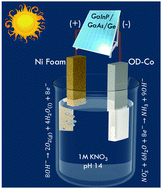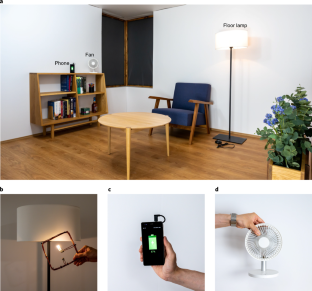2021-09-08 アメリカ合衆国・イリノイ大学シカゴ校(UIC)
・ UIC、テキサス工科大学、ノースウェスタン大学、ウォレン・タウンシップ高校、Worldwide Liquid Sunshine および Dow Inc.が、太陽光と硝酸塩を利用した電気化学反応を通じ、他の同様な技術の 10倍の効率で廃水からアンモニアを生成するカーボンニュートラルな技術を開発。
・ オンデマンドでの肥料合成の実現だけでなく、先進国・開発途上国の農業・エネルギー部門や化石燃料からの温暖化ガス排出量低減の活動に大きな影響を及ぼす可能性がある。
・ 窒素原子 1 個と水素原子 3 個から成るアンモニアは、肥料を始めプラスチックや製薬等多くの製品の重要な構成要素。窒素からのアンモニアを合成する従来方法では、化石燃料の燃焼による大量の熱で窒素原子間の強力な結合を解除して水素との結合を促すハーバー・ボッシュ法を利用。
・ 同大学の過去の研究では、触媒をコーティングしたろ過網を用いて、水ベースの溶液中で高純度の窒素ガスをろ過してアンモニアを合成する低環境負荷型の技術を開発している。窒素を分解するろ過網の通電には微量の化石燃料エネルギーを使用するが、アンモニアよりも水素ガスを多く生成した。
・ 新合成技術では、下水の汚染物質である硝酸塩から窒素を供給し、電気化学反応に太陽光のエネルギーを利用。水素ガス副反応がほとんど無く、アンモニアをほぼ 100%合成する。CO2 等の温暖化ガスを排出せず、他のアンモニア合成最新技術の 10 倍である太陽光-燃料(STF)効率 11%を達成した。
・ コンピューターモデルにより触媒に最適な金属としてコバルトを特定し、反応における挙動の最適化の結果、酸化によるコバルトの粗い表面が硝酸塩のほぼ全ての分子をアンモニアに変換する反応に最も優れることを確認した。
・ 産業廃水や流出水の汚染物質の除去を助け、余剰の硝酸塩へのばく露による高いリスクや経済的な不利益を被る可能性のある郊外地での窒素サイクルの調整にも貢献できる。飲料水を通じた硝酸塩の大量摂取では、がんや甲状腺疾患等の健康上のリスクがある。
・ 地方自治体、下水処理センターや産業界との協働により、大規模試験に向けた大型のプロトタイプを構築中。新技術は UIC Office of Technology Management を通じ、特許出願済み。
URL: https://today.uic.edu/combining-sunlight-and-wastewater-nitrate-to-make-the-worlds-no-2-chemical
<NEDO海外技術情報より>
(関連情報)
Energy & Environmental Science 掲載論文(アブストラクトのみ:全文は有料)
Solar-driven electrochemical synthesis of ammonia using nitrate with 11% solar-to-fuel efficiency at
ambient conditions
URL: https://pubs.rsc.org/en/content/articlelanding/2021/EE/D1EE01879E
Abstract
Ammonia is an essential commodity chemical used in the manufacture of fertilizers, pharmaceuticals, ammunition, and plastics, and is a promising alternative fuel source and carrier. Today most ammonia is manufactured by the century-old Haber–Bosch process, which accounts for 1–2% of worldwide energy production and a substantial fraction of global greenhouse gas emissions. Solar-driven electrochemical synthesis of ammonia using nitrates presents a sustainable pathway to produce renewable fuels utilizing wastewater. Previous efforts in solar-driven electrosynthesis of ammonia have been seriously affected by lower specific activity (<10 mA cm−2) of electrochemical nitrate reduction reaction (NiRR) and thereby lower solar-to-fuel (STF) efficiency (<1%). Here, we show oxide-derived Co as an efficient NiRR catalyst with the highest specific activity (∼14.56 mA cm−2 at −0.8 V vs. RHE) and selectivity. The oxide-derived Co offers a maximum faradaic efficiency of 92.37 ± 6.7% and ammonia current density of 565.26 mA cm−2 at −0.8 V vs. RHE. Integrating this catalyst in a PV-electrolyzer cell yields an unprecedented STF efficiency of 11% for ammonia, which is an order of magnitude higher than state-of-the-art systems.




